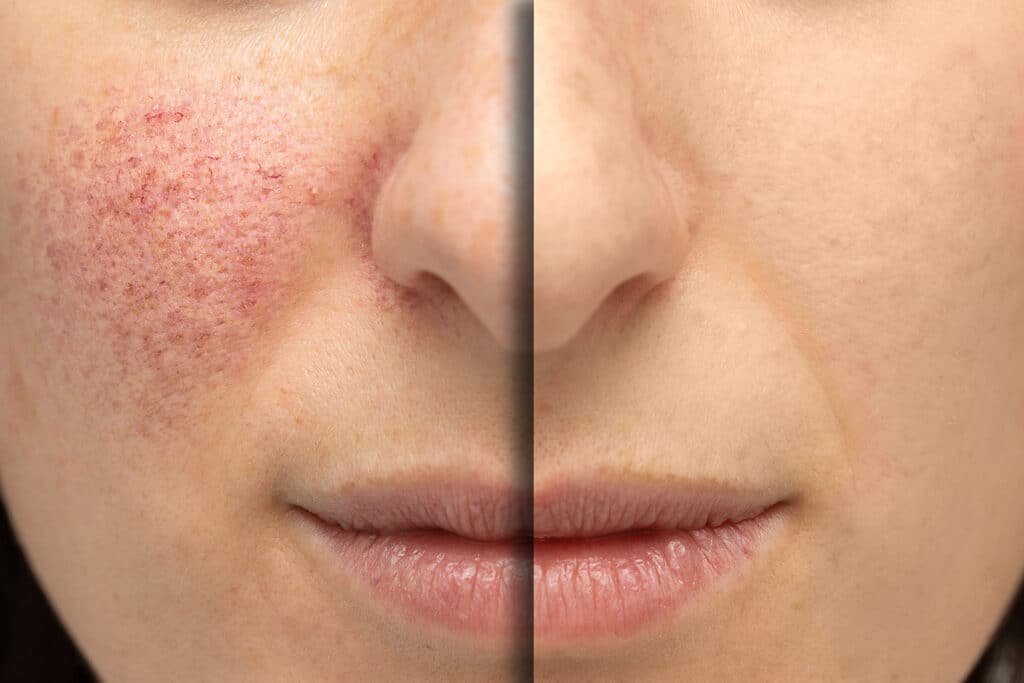Posted by: Skin And Cancer Institute in Medical Dermatology

Rosacea
Rosacea is a chronic skin condition that affects the face and causes a variety of symptoms. It is characterized by persistent redness, visible blood vessels, and sometimes small, red, pus-filled bumps on the face. These symptoms may come and go and may be accompanied by a burning or stinging sensation. Rosacea is most commonly found in fair-skinned individuals, and typically affects the cheeks, forehead, chin, and nose. However, it can also affect the ears, chest, and back.
The cause of rosacea is not fully understood, but there are several factors that may contribute to its development. These include genetics, environmental triggers, and certain skin care products. Some research suggests that a combination of factors, including genetic predisposition and environmental triggers, may play a role in the development of rosacea.
A Skin and Cancer Institute dermatologist can help diagnose and manage rosacea by performing a physical examination of the skin and asking about the patient’s medical history and symptoms. They may also use diagnostic tools such as a Wood’s lamp to examine the skin more closely. The Wood’s lamp emits a violet light that can help the SCI dermatologist to distinguish between different types of skin conditions.
Treatment options for rosacea include topical and oral medications, such as antibiotics and anti-inflammatory drugs, as well as laser and light therapy. Topical antibiotics such as metronidazole, azelaic acid, and ivermectin can help reduce inflammation and redness. Oral antibiotics such as tetracyclines and macrolides can also be used to control inflammation.
Laser and light therapy can also be used to reduce redness and improve the appearance of blood vessels. These treatments use intense light to target and destroy the small blood vessels that cause redness. Some of the most common laser and light therapy options include intense pulsed light (IPL) and pulsed dye laser (PDL).
In addition to medication, lifestyle changes can also help reduce symptoms of rosacea. Avoiding triggers such as sunlight, alcohol, spicy food, and hot drinks can help reduce redness and inflammation. A good skincare routine is also recommended, such as using gentle, non-irritating products and avoiding harsh scrubs.
It is important to consult a SCI dermatologist to find the best treatment plan for you and to prevent rosacea from getting worse over time. A SCI dermatologist can help you to identify triggers, which can help to prevent flare-ups. They can also recommend skincare products that are gentle and non-irritating, which can help to reduce inflammation and redness. Regular follow-up appointments can also help to monitor the progress of treatment and make any necessary adjustments.
In some cases, rosacea can also cause ocular rosacea, which can affect the eyes and eyelids. Symptoms of ocular rosacea include red, irritated, and watery eyes, as well as the formation of small cysts on the eyelids. Ocular rosacea can be treated with a combination of oral and topical antibiotics, as well as warm compresses and eyelid scrubs.
It is important to note that rosacea is a chronic condition and there is no cure. However, with proper treatment, it can be managed and controlled. With the help of a SCI dermatologist, you can learn how to control your symptoms and improve your quality of life.